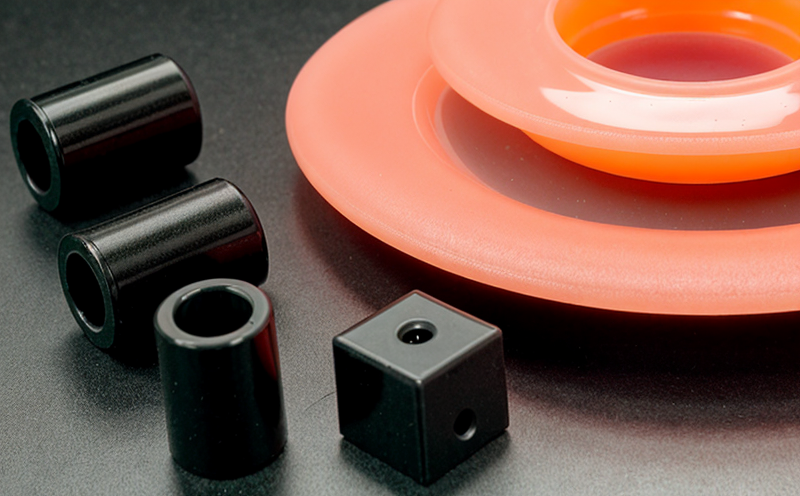NF EN 13138 Buoyancy Aid Testing of Plastic Swimming Devices
The NF EN 13138 standard specifies the requirements for buoyancy aids made from plastic materials used in swimming pools and open water. This service ensures compliance with European regulations, focusing on the safety and performance of such devices. Quality managers, compliance officers, R&D engineers, and procurement teams rely on this testing to ensure that products meet stringent standards.
The primary goal of NF EN 13138 is to guarantee that buoyancy aids are safe for use in water environments. This includes checking the buoyancy properties, material durability, and overall structural integrity under various conditions. The standard applies to all types of plastic swimming devices designed to help individuals stay afloat while swimming or engaging in water sports.
The testing process is rigorous and involves several stages. Specimens are prepared according to the specified dimensions and materials outlined in the standard. Instrumentation used for this service includes high-precision scales, hydrostatic testing tanks, and specialized software for data analysis. The testing procedure involves measuring the buoyancy of the device by submerging it in water under controlled conditions.
The acceptance criteria are strict to ensure that all devices meet the required safety standards. Devices must demonstrate consistent buoyancy properties across a range of temperatures and water salinity levels. Additionally, mechanical strength tests are conducted to simulate real-world use scenarios. These include drop tests from various heights onto concrete surfaces and impact resistance testing.
The results of these tests provide critical insights into the performance characteristics of the buoyancy aids. Compliance with NF EN 13138 ensures that manufacturers can confidently market their products as safe and effective swimming aids, contributing to public safety in aquatic environments.
Scope and Methodology
| Test Parameter | Description |
|---|---|
| Buoyancy Measurement | The buoyancy of each device is determined by submerging it in a controlled hydrostatic tank. The volume and weight are measured to calculate the specific buoyancy. |
| Material Integrity | The integrity of the plastic material is assessed through visual inspection for cracks, discoloration, or other signs of deterioration. Mechanical testing is also performed using specialized equipment. |
| Instrumentation | High-precision scales and hydrostatic tanks are used to ensure accurate measurement of buoyancy and weight. Specialized software processes the data collected during testing. |
| Environmental Conditions | The tests account for variations in water temperature and salinity, simulating real-world conditions found in swimming pools and open waters. |
Testing begins with specimen preparation. Specimens are cut to the dimensions specified in NF EN 13138, ensuring consistency across all samples. Each device is carefully cleaned before being submerged in a controlled hydrostatic tank filled with water. The tank allows for precise measurement of buoyancy by comparing the weight and volume of each specimen.
The mechanical strength tests involve simulating drop heights from which devices might be used or dropped into water. This helps determine how durable the materials are under stress conditions. Impact resistance testing further evaluates the resilience of the plastic components against impacts, ensuring they withstand typical usage scenarios without compromising safety.
The results of these tests provide comprehensive data on the performance characteristics of buoyancy aids. Compliance with NF EN 13138 ensures that products meet international standards and are suitable for use in various water environments. This service helps manufacturers ensure their products are safe, reliable, and effective swimming aids.
Quality and Reliability Assurance
The quality assurance process for NF EN 13138 testing involves multiple checks at every stage of the testing procedure. Rigorous calibration procedures ensure that all instrumentation is accurate and consistent with international standards. Each specimen undergoes detailed inspection before being tested to identify any potential defects or inconsistencies.
Data collection during testing is meticulously documented using specialized software, which helps in tracking test results and identifying trends over time. Quality control measures are implemented throughout the process, including regular calibration checks and cross-referencing of data points with international standards such as ISO 9001.
The reliability of the testing process is further enhanced through strict adherence to standardized procedures and methodologies outlined in NF EN 13138. This ensures that all devices are tested under uniform conditions, providing consistent and reliable results. By adhering to these stringent quality assurance protocols, we ensure that manufacturers can trust our test results when making decisions about product safety and compliance.
Environmental and Sustainability Contributions
The testing of buoyancy aids according to NF EN 13138 not only ensures safety but also promotes environmental sustainability. By adhering to this standard, manufacturers can produce products that are durable and reliable, reducing the need for frequent replacements. This extends the lifecycle of each device, minimizing waste generated from discarded items.
The use of high-quality plastic materials in compliance with NF EN 13138 helps reduce environmental impact by ensuring longevity and recyclability. The testing process identifies any potential issues early on, allowing manufacturers to make necessary adjustments before production begins. This proactive approach minimizes material wastage during manufacturing processes and ensures that only reliable and safe products reach the market.
Furthermore, compliance with NF EN 13138 encourages innovation in materials science by pushing boundaries for what is possible within set safety parameters. This fosters a culture of continuous improvement, where sustainability remains at the forefront of development efforts. By adopting this standard, manufacturers contribute significantly to reducing their ecological footprint while providing safer and more reliable products.





